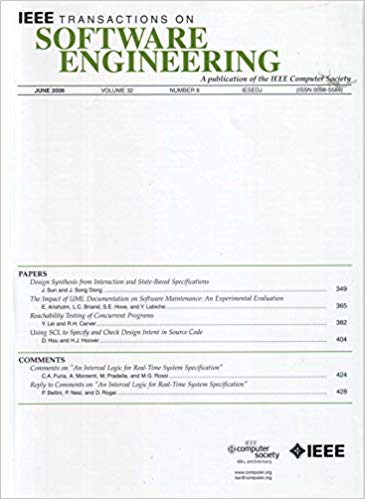Just-in-Time Prediction of Software Architectural Changes Through Commit-Level Analyses
IF 5.6
1区 计算机科学
Q1 COMPUTER SCIENCE, SOFTWARE ENGINEERING
引用次数: 0
Abstract
During software evolution, commits with various purposes, such as bug fixes, feature additions, improvements, etc., are continuously applied to software systems. This could drift software architecture from its planned design, and even cause architectural decay, that negatively affects software maintenance. Although prior studies have presented that even daily code commits could induce architectural changes, and the commit-level analysis has been widely used for multiple software comprehension and maintenance tasks, there is little work analyzing the architectural changes at the commit level. To bridge this gap, we conduct a study investigating the relationships between commits and architectural changes. Through our evaluation of thirty projects, we have shown that the architecture remains stable after most of the commits. However, there still exists a large portion of commits (27% of all studied commits) that have induced architectural changes, which deserve more attention. This further suggests the importance of analyzing architectural changes at the commit level. Meanwhile, we present a suite of commit-level metrics strongly correlated with architectural changes. Finally, we propose prediction models that can effectively forecast how much of the architecture would be changed after a commit.通过委员会级分析及时预测软件架构变更
在软件发展过程中,带有各种目的的提交,如bug修复、特性添加、改进等,会不断地应用于软件系统。这可能会使软件架构偏离其计划设计,甚至导致架构衰退,从而对软件维护产生负面影响。尽管先前的研究表明,即使是每天的代码提交也会引起体系结构的变化,并且提交级分析已广泛用于多种软件理解和维护任务,但在提交级分析体系结构变化的工作很少。为了弥合这一差距,我们进行了一项研究,调查提交和架构变更之间的关系。通过我们对30个项目的评估,我们已经表明,在大多数提交之后,架构仍然是稳定的。然而,仍然存在很大一部分提交(占所有已研究提交的27%)引起了架构更改,值得更多关注。这进一步表明了在提交级别分析架构变更的重要性。同时,我们提出了一套与架构变更密切相关的提交级度量。最后,我们提出了一些预测模型,这些模型可以有效地预测在提交之后架构会有多少变化。
本文章由计算机程序翻译,如有差异,请以英文原文为准。
求助全文
约1分钟内获得全文
求助全文
来源期刊

IEEE Transactions on Software Engineering
工程技术-工程:电子与电气
CiteScore
9.70
自引率
10.80%
发文量
724
审稿时长
6 months
期刊介绍:
IEEE Transactions on Software Engineering seeks contributions comprising well-defined theoretical results and empirical studies with potential impacts on software construction, analysis, or management. The scope of this Transactions extends from fundamental mechanisms to the development of principles and their application in specific environments. Specific topic areas include:
a) Development and maintenance methods and models: Techniques and principles for specifying, designing, and implementing software systems, encompassing notations and process models.
b) Assessment methods: Software tests, validation, reliability models, test and diagnosis procedures, software redundancy, design for error control, and measurements and evaluation of process and product aspects.
c) Software project management: Productivity factors, cost models, schedule and organizational issues, and standards.
d) Tools and environments: Specific tools, integrated tool environments, associated architectures, databases, and parallel and distributed processing issues.
e) System issues: Hardware-software trade-offs.
f) State-of-the-art surveys: Syntheses and comprehensive reviews of the historical development within specific areas of interest.
 求助内容:
求助内容: 应助结果提醒方式:
应助结果提醒方式:


